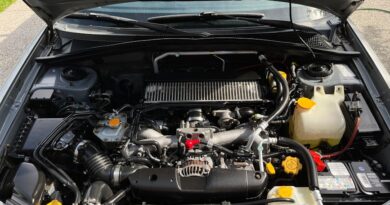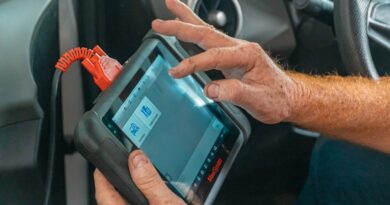Fixing Your Truck: Step-by-Step Instructions
Did you know that nearly 70% of truck owners are likely to encounter a problem they can fix themselves? Whether it’s a flat tire or a dead battery, knowing how to make simple repairs can save you time and money.
This guide will help you understand some common truck issues and how to tackle them. You don’t need to be a mechanic to get your truck back on the road. Let’s get started!
Why Learn to Fix Your Truck?

Learning to fix your truck has many benefits:
- Cost-Effective: Save money on garage bills.
- Confidence: Gain skills that empower you.
- Convenience: Fix issues at home, on your schedule.
Now that we see the value, lets dive into some basic repairs you can do yourself.
What Tools Do You Need?

Before you start fixing your truck, gather some basic tools. Heres a quick list:
- Wrenches
- Screwdrivers (flat and Phillips)
- Jack and jack stands
- Tire iron
- Multimeter (for electrical issues)
- Pliers
Having these tools on hand makes it easier to fix problems as they arise.
How to Change a Flat Tire?

Flat tires are one of the most common issues. Heres how you can change one:
- Find a Safe Spot: Pull over to a flat area away from traffic.
- Loosen the Lug Nuts: Use the tire iron to turn the nuts counterclockwise.
- Lift the Truck: Use the jack to raise the truck until the tire is off the ground.
- Remove the Tire: Take off the lug nuts completely and pull the tire off.
- Install the New Tire: Place the new tire on and hand-tighten the lug nuts.
- Lower the Truck: Carefully lower your truck back to the ground.
- Tighten the Lug Nuts: Once the truck is down, use the tire iron to tighten the nuts fully.
Congratulations! You’ve just changed a tire. it’s a handy skill that can save you hours.
How to Jump-Start a Dead Battery?

A dead battery is another common issue. Heres a step-by-step guide to jump-start it:
- Find Another Vehicle: Youll need a car with a working battery.
- Park Close: Position the two vehicles so the batteries are near each other.
- Turn Off Both Cars: Make sure both engines are off before connecting.
- Connect the Jumper Cables:
- Red to dead battery positive (+).
- Red to working battery positive (+).
- Black to working battery negative (-).
- Black to an unpainted metal surface on the dead vehicle.
- Start the Working Vehicle: Let it run for a few minutes.
- Start the Dead Vehicle: Try to start your truck.
- Remove Cables: Take off the cables in reverse order.
Jump-starting your truck is a quick fix that can get you moving again.
How to Change Engine Oil?
Regular oil changes keep your engine running smoothly. Heres how to do it yourself:
- Gather Supplies: Youll need new oil, an oil filter, a wrench, and an oil catch pan.
- Warm Up the Engine: Run your truck for a few minutes to warm the oil.
- Lift the Truck: Use the jack to raise your truck and secure it with jack stands.
- Drain Old Oil: Place the catch pan under the oil pan and remove the drain plug.
- Replace the Oil Filter: Use the wrench to remove the old filter and replace it with a new one.
- Add New Oil: Replace the drain plug and pour in the new oil through the oil fill cap.
- Check Levels: Start the engine and check the oil level with the dipstick.
Changing your oil regularly can help your truck live longer.
What to Do If the Check Engine Light Comes On?
Seeing the check engine light can be alarming. But don’t panic. Heres how to handle it:
- Check for Obvious Issues: Look under the hood for loose wires or leaks.
- Use an OBD-II Scanner: This device reads error codes. Buy or borrow one to find out what’s wrong.
- Consult the Manual: Refer to your trucks manual for specific codes.
- Consider Professional Help: If you can’t figure it out, it might be time to see a mechanic.
Ignoring the light could lead to bigger issues later, so it’s best to address it promptly.
How to Maintain Your Truck?
Regular maintenance keeps your truck running smoothly. Here are some simple maintenance tips:
- Check tire pressure monthly.
- Inspect brakes regularly.
- Replace air filters as needed.
- Keep the exterior clean to prevent rust.
- Check fluid levels regularly (brake, coolant, transmission).
Regular upkeep can prevent bigger problems from developing.
Common Misconceptions About DIY Repairs
Many people think they can’t fix their truck. Here are some common myths:
- Myth 1: You need to be a mechanic to fix anything.
- Myth 2: DIY repairs are always complicated.
- Myth 3: You need expensive tools to start.
In reality, many repairs are simple with the right knowledge and tools. You can learn as you go!
Where Can You Learn More?
There are many resources available for truck repairs. Websites like AutoTrader provide tips and tricks for all kinds of repairs. YouTube also has countless videos showing step-by-step instructions for nearly every vehicle issue.
don’t forget to consult your truck’s manual, which contains valuable information specific to your model.
what’s Next? Your Action Plan
Now that you have this guide, heres what you can do next:
- Gather your tools and supplies.
- Pick a simple repair to start with, like changing a tire.
- Practice your skills regularly to build confidence.
- Join local car clubs or online forums for support and resources.
With a little practice, youll find fixing your truck can be rewarding. So grab those tools and get started!
Remember, the more you learn, the more capable you’ll become at fixing your truck. Happy repairing!



